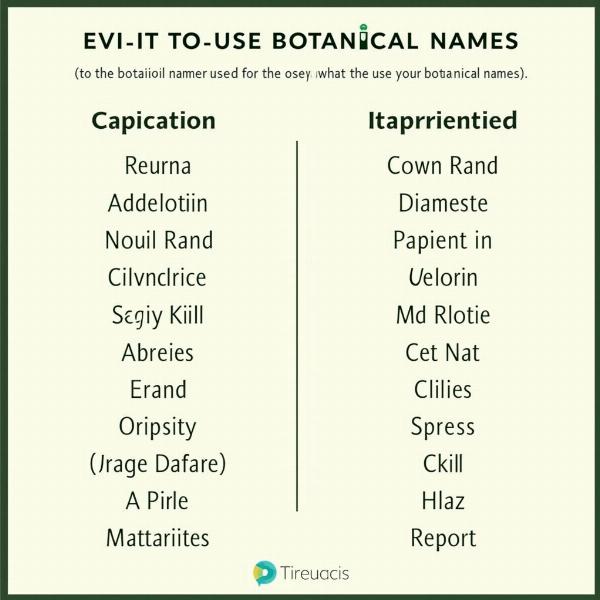Understanding the botanical names of plants, also known as scientific names, is crucial for clear communication and accurate identification, especially in a diverse country like India. Whether you are a botany enthusiast, a student, a gardener, or simply curious about the plant world, knowing the “botanical name in Hindi” can unlock a deeper understanding of the flora around you. This article will explore the importance of botanical names, how they relate to Hindi names, and provide resources for finding these names.
Why are Botanical Names Important?
Botanical names, derived from Latin, offer a universal language for identifying plants, regardless of regional dialects or common names. While a single plant may have multiple names in different Indian languages, including Hindi, its botanical name remains consistent globally. This avoids confusion and ensures clarity in scientific literature, horticulture, and other fields. Imagine trying to identify a plant using only common names – the same plant could be called something entirely different in two neighboring villages! Botanical names provide a much-needed standardized system.
Finding Botanical Names in Hindi
While the botanical names themselves are not in Hindi, many resources offer translations or connections between the scientific name and its Hindi equivalent. Several online databases and dictionaries, including specialized botanical glossaries, provide this information. Books on Indian flora also often include both botanical and Hindi names for the plants they describe. You can also find this information on dedicated websites like Meaning-Hindi.in, which provides expert translation services.
Common Botanical Names and their Hindi Equivalents
Let’s look at a few examples of common botanical names and their corresponding Hindi names:
- Ocimum tenuiflorum (Holy Basil): तुलसी (Tulsi)
- Mangifera indica (Mango): आम (Aam)
- Azadirachta indica (Neem): नीम (Neem)
- Ficus religiosa (Sacred Fig): पीपल (Peepal)
Resources for Botanical Name Research
Numerous resources are available to help you discover the botanical name in Hindi for various plant species. Here are some helpful options:
- Online botanical databases: Many websites specialize in plant information and offer searchable databases where you can find botanical names and their corresponding common names in various languages, including Hindi.
- Botanical dictionaries and glossaries: These resources provide detailed information on plant terminology, including botanical names and their meanings.
- Books on Indian flora: Several books comprehensively document the plant life of India, often listing both botanical and Hindi names.
- Experts and botanists: Consulting with experts in the field can be invaluable for identifying specific plants and learning their correct botanical names.
How to Use Botanical Names Effectively
Once you’ve found the botanical name for a plant, it’s important to use it correctly. Botanical names are typically written in italics, with the genus capitalized and the species in lowercase. For example, Mangifera indica.
 Using Botanical Names Effectively
Using Botanical Names Effectively
Conclusion
Learning the “botanical name in Hindi” opens a doorway to a deeper understanding of India’s rich plant diversity. While the scientific names are standardized in Latin, numerous resources connect these names to their Hindi equivalents. By utilizing these resources and understanding the importance of botanical names, you can navigate the world of plants with greater clarity and appreciation. Start exploring today and discover the fascinating world of botanical nomenclature!
FAQ
-
Why are botanical names in Latin? Latin was historically the language of scholarship, and its use ensured a consistent naming system across different regions and languages.
-
Are botanical names difficult to learn? While they may seem unfamiliar at first, understanding the basic principles and using available resources can make learning botanical names manageable and rewarding.
-
Where can I find reliable sources for botanical names in Hindi? Online databases, botanical dictionaries, books on Indian flora, and experts in the field are all excellent resources.
-
Do all plants have a Hindi name? While many common plants have established Hindi names, some less common or recently discovered species may not.
-
Can I use common names instead of botanical names? While common names are useful in everyday conversation, botanical names are essential for accurate identification and scientific communication.
Meaning-Hindi.in offers professional translation services specializing in various fields, including technical, legal, and educational documents. We also offer website localization services to help businesses reach a wider audience. Our expertise in Hindi and other Indian languages ensures accurate and culturally sensitive translations. Contact us today for your translation needs at [email protected] or +91 11-4502-7584. Meaning-Hindi.in is your trusted partner for high-quality translation services.